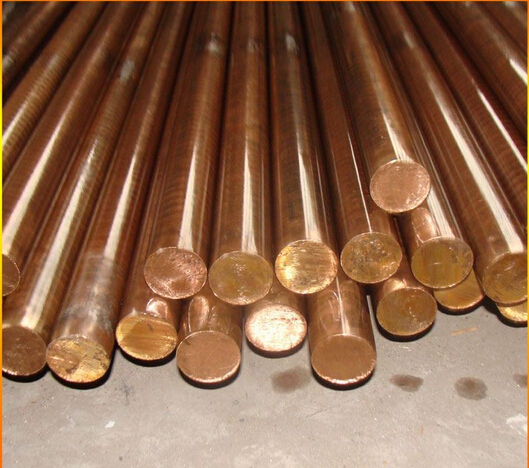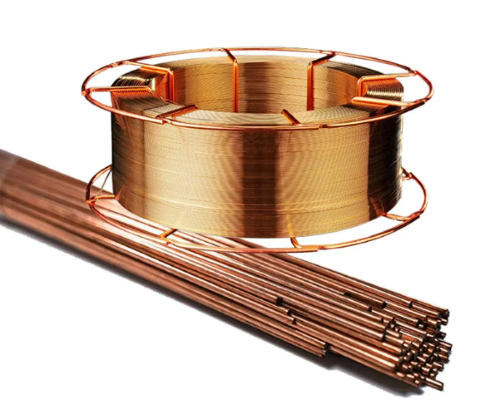Beryllium: A Rising Star on the High-tech Stage
Beryllium is a rare and lightweight metal that holds a unique place on the periodic table as the fourth element and the lightest among the alkaline earth metals. Discovered in 1798 by the French chemist Nicolas-Louis Vauquelin, this metal was first identified in two different gemstones, beryl and emerald. Despite their different appearances, both stones contained a new, unknown element. Vauquelin initially called it “Glucinium,” inspired by the Greek word Glykys, meaning “sweet,” due to the taste of its compounds. Today, this element is known as beryllium, and it plays an increasingly vital role in advanced technology.
The Power of Beryllium Bronze
One of the most important uses of beryllium is in alloy manufacturing, especially in creating beryllium bronze. Traditional bronze has its limitations: it is softer than steel, less elastic, and more vulnerable to corrosion. However, by adding just 1% to 3.5% beryllium, bronze transforms into a highly durable and resilient alloy called beryllium bronze. This alloy has superior mechanical properties compared to steel, with enhanced hardness, elasticity, and corrosion resistance. Furthermore, beryllium bronze retains excellent electrical conductivity, a feature that sets it apart from many other strong alloys.
Because of these remarkable properties, beryllium bronze is widely used across industries. In marine applications, it’s a preferred material for components exposed to harsh environments, such as deep-sea detectors and undersea cables. It’s also commonly found in precision tools, high-speed bearings, gears, and welding electrodes, where strength and durability are critical. In commercial aircraft, beryllium bronze bearings resist both corrosion and wear, significantly extending their lifespan. Compared to traditional materials, these bearings often last over four times longer, enhancing the reliability and performance of the aircraft. Additionally, springs made from beryllium bronze can compress millions of times without losing their strength or resilience, making them ideal for precision instruments and mechanical systems.
A variant of beryllium bronze containing nickel adds further unique qualities. Nickel-containing beryllium bronze doesn’t produce sparks upon impact, making it invaluable in industries dealing with flammable materials, such as oil and explosives. Moreover, this alloy is non-magnetic, which allows it to be used in parts that must remain unaffected by magnetic fields, such as components in sensitive electronics and medical devices.

A "Trump Card" in Aerospace Materials
In aerospace engineering, every kilogram of weight matters. Using lightweight, strong materials can reduce fuel consumption and lower launch costs. Beryllium’s low density combined with its impressive strength makes it ideal for use in spacecraft and aircraft. Beryllium-aluminum alloys, which blend the strengths of both metals, are frequently chosen for structural parts in satellites and spacecraft. They provide the right balance of strength and lightness, essential for complex space missions that demand highly resilient materials.
Beryllium alloys also play a significant role in aircraft manufacturing. Many large commercial planes contain over 1,000 parts made from beryllium alloy, including critical components like rudders and wing boxes. Beryllium’s thermal properties make it especially valuable in high-speed and high-temperature applications. With a high melting point, excellent thermal conductivity, and a stable thermal expansion rate, beryllium handles intense heat with ease. For example, supersonic aircraft use beryllium in their braking systems because it efficiently absorbs and dissipates heat. In space missions, beryllium heat shields protect satellites and spacecraft from overheating when they enter or exit Earth’s atmosphere, ensuring that vital equipment remains intact and operational.
In addition, beryllium is crucial for inertial navigation systems, which require stable, precise components. These systems are used in missiles, submarines, and aircraft to maintain accurate navigation. Beryllium’s stability and resistance to deformation make it an ideal choice for these demanding applications, where any error in navigation could have serious consequences.
Beryllium’s Broader Applications in Electronics and Nuclear Fields
Beyond aerospace, beryllium is also widely used in the electronics and nuclear industries. Its high electrical conductivity, corrosion resistance, and lightweight properties make it a prime choice for connectors, switches, and springs in electronic systems. These components often face constant use and require materials that won’t degrade easily. Beryllium’s durability ensures long-lasting performance in these applications.
In the field of nuclear energy, beryllium serves as an essential neutron reflector, helping to control and improve nuclear reactions. By reflecting neutrons, beryllium aids in regulating the fission process in reactors, making it an indispensable part of modern reactor design. Few materials can match beryllium’s effectiveness in these applications, highlighting its unique contribution to nuclear technology.
Conclusion: A Bright Future for Beryllium
With its combination of strength, lightness, thermal stability, and corrosion resistance, beryllium is set to remain an important material in high-tech fields. Its applications in aerospace, electronics, and nuclear industries show just how versatile and valuable this metal is. As technology advances, beryllium’s role in supporting innovation will only grow. Companies like Stanford Advanced Materials (SAM) provide a range of high-quality beryllium products to meet the demands of these advanced applications, ensuring a reliable supply for industries pushing the boundaries of what’s possible.



